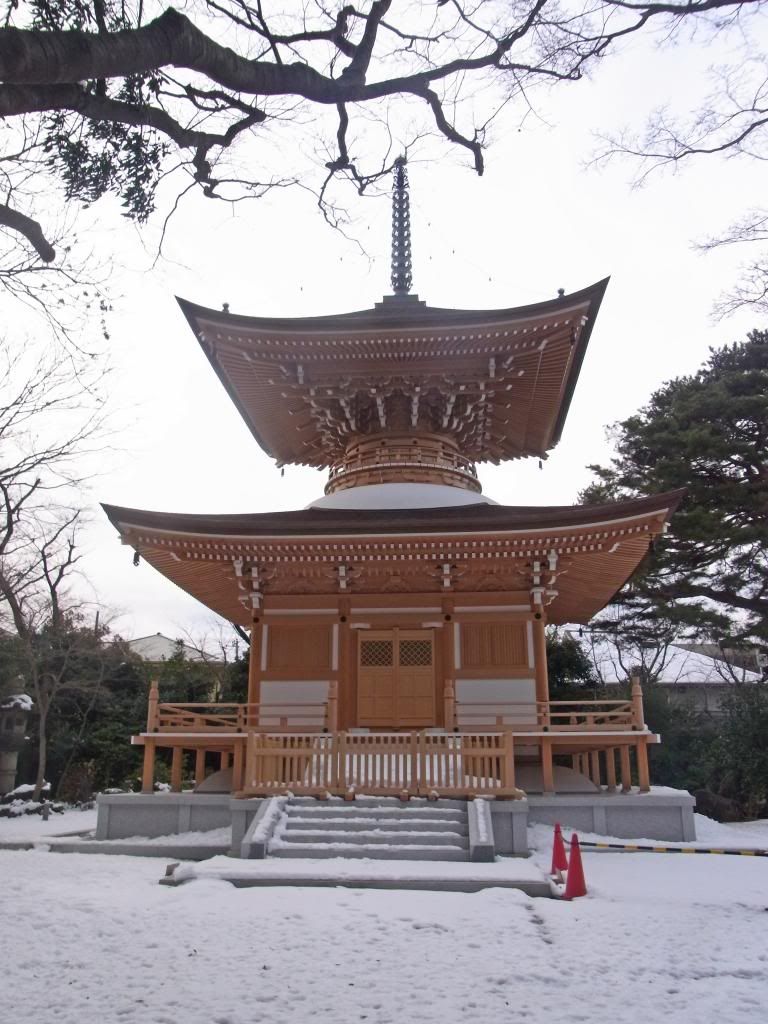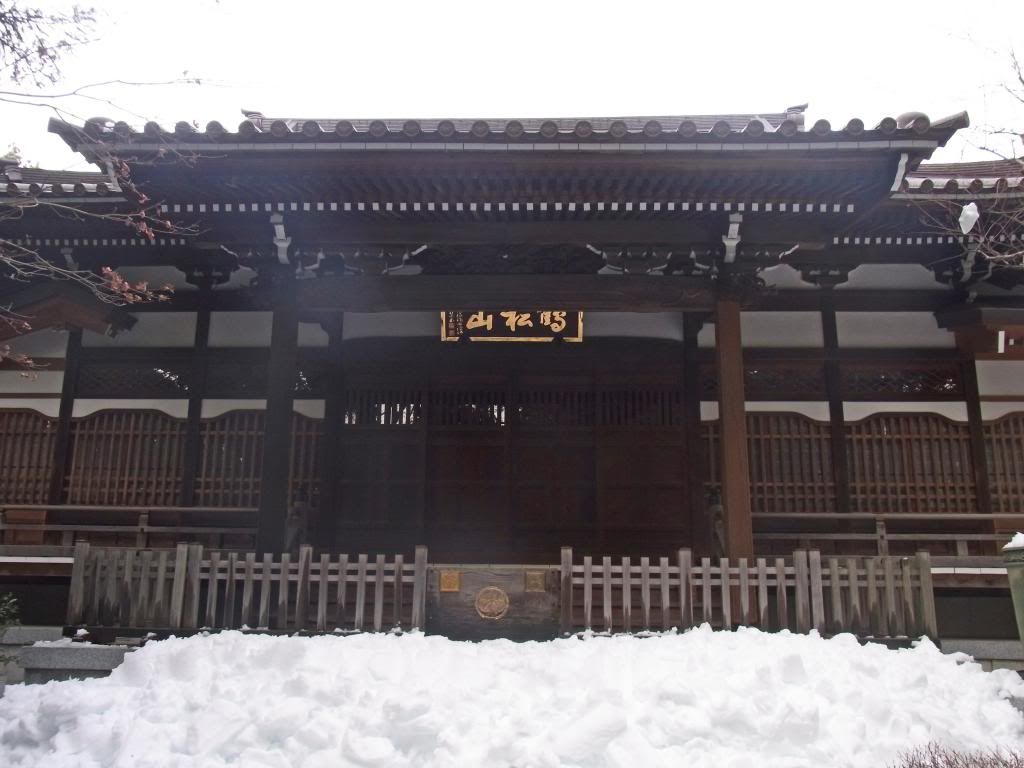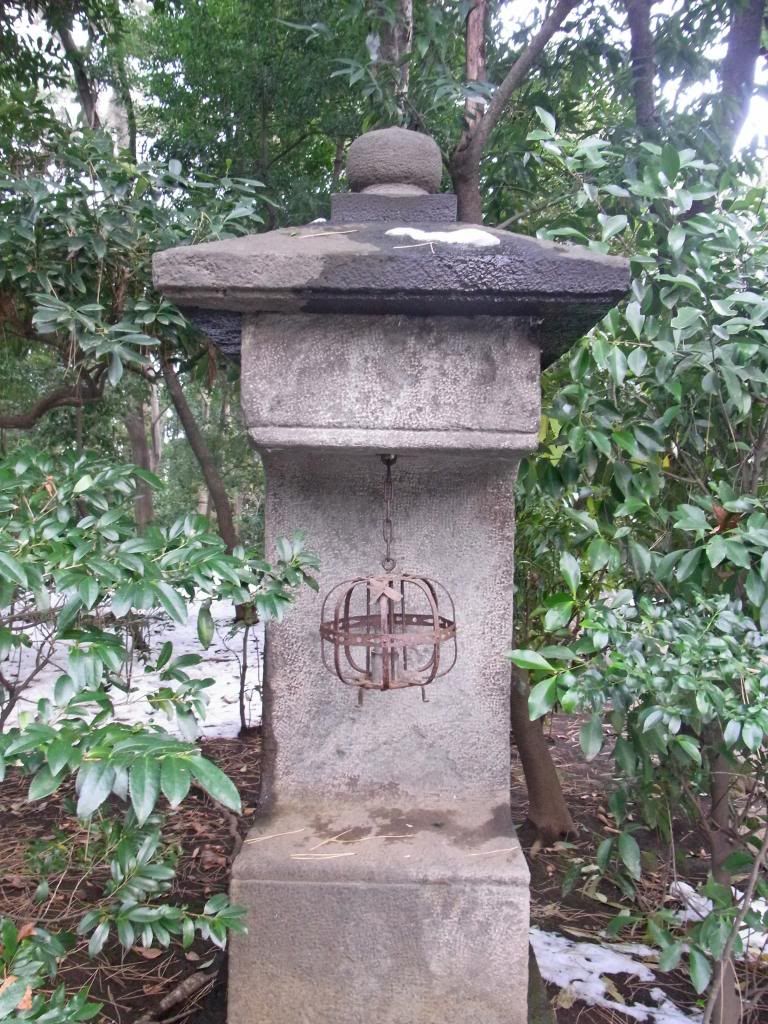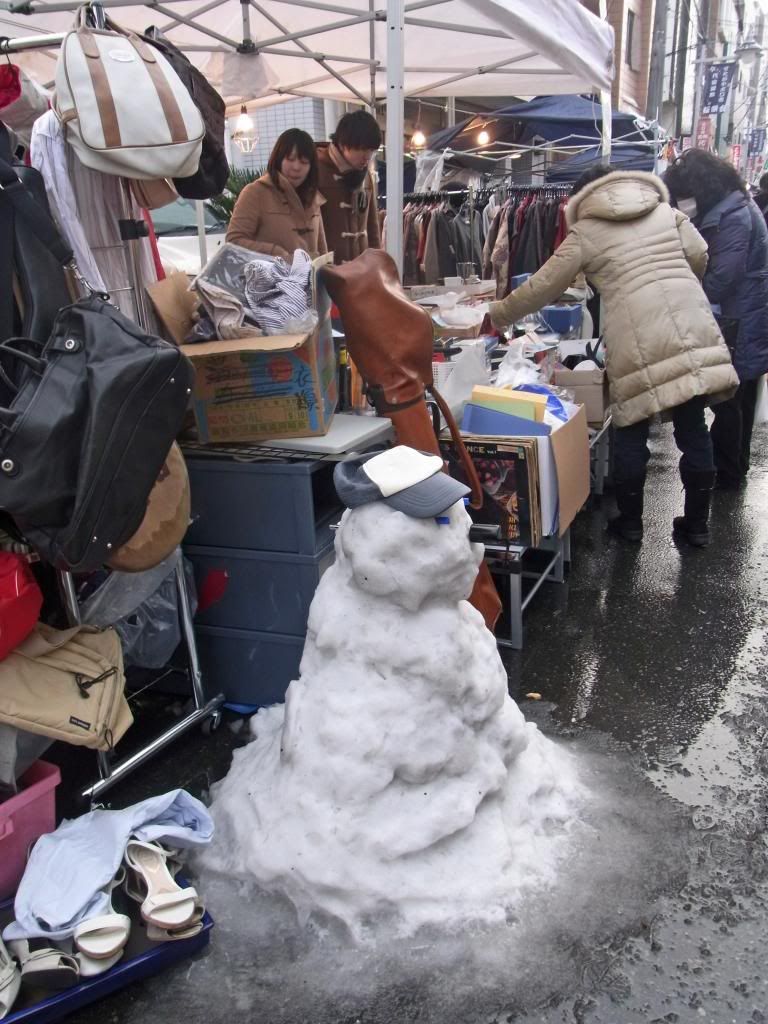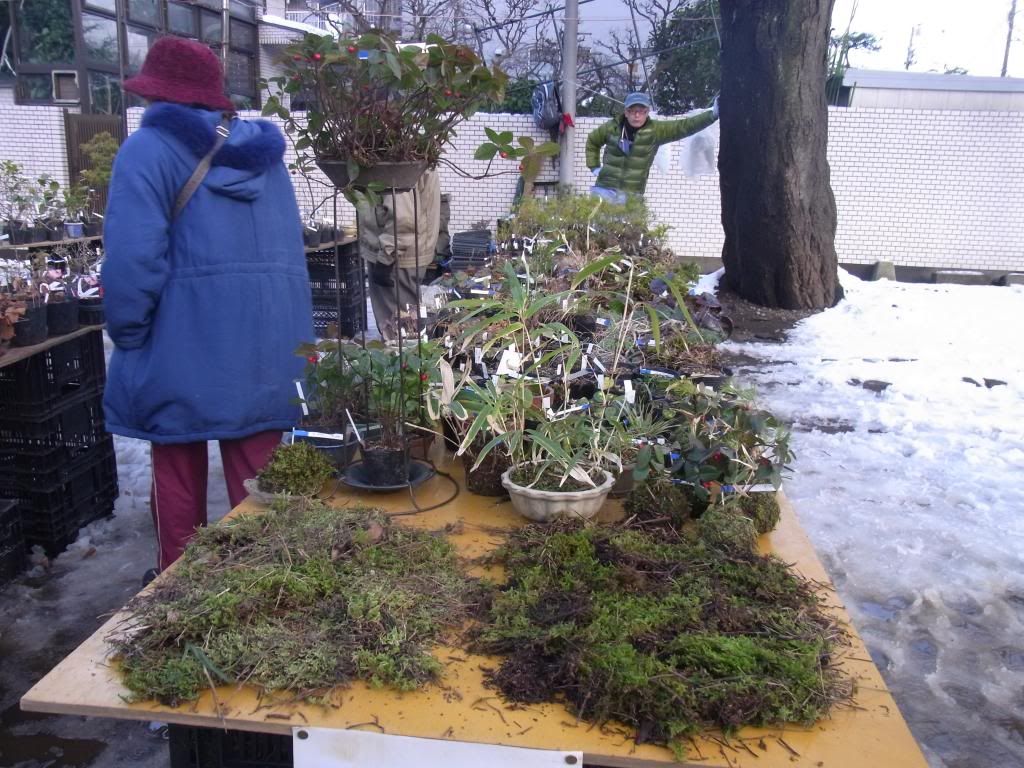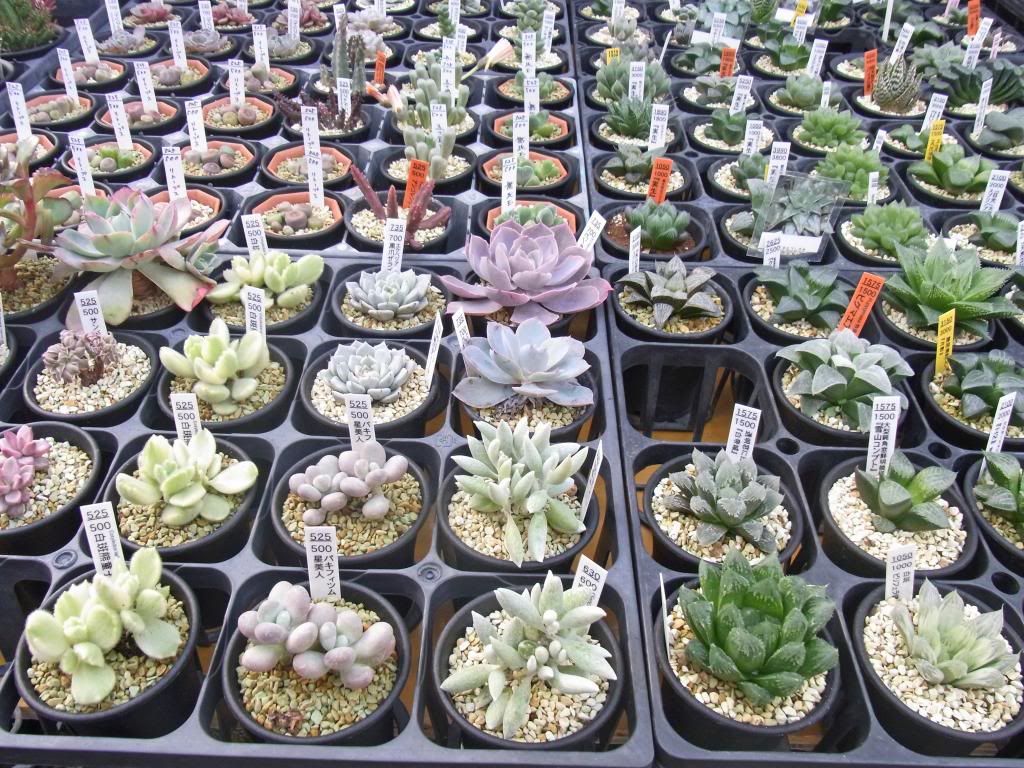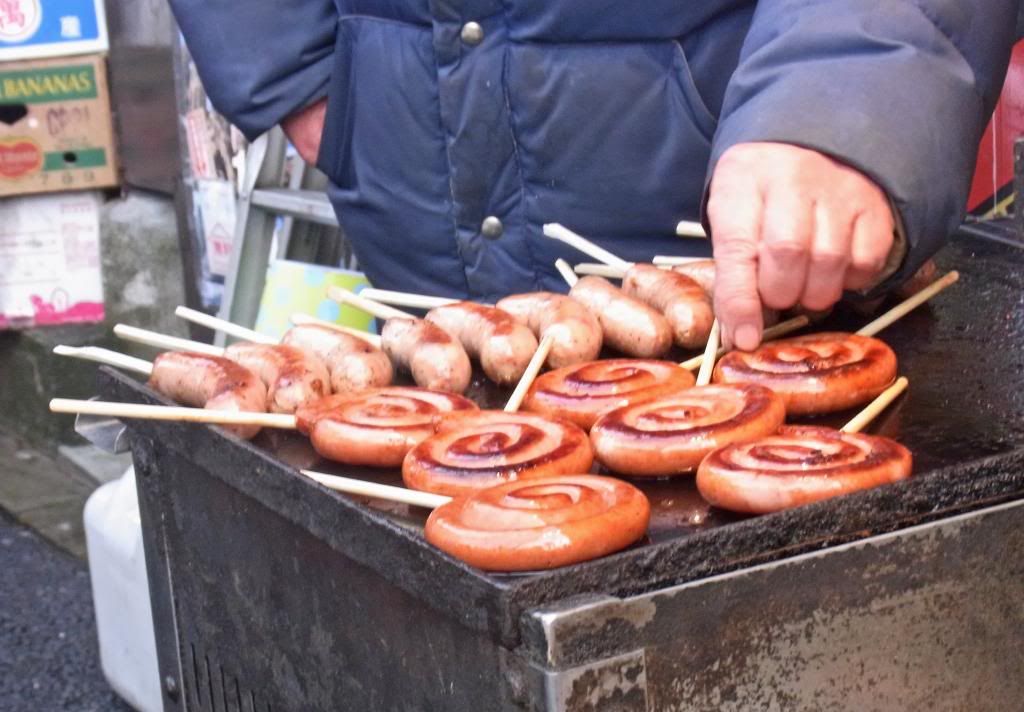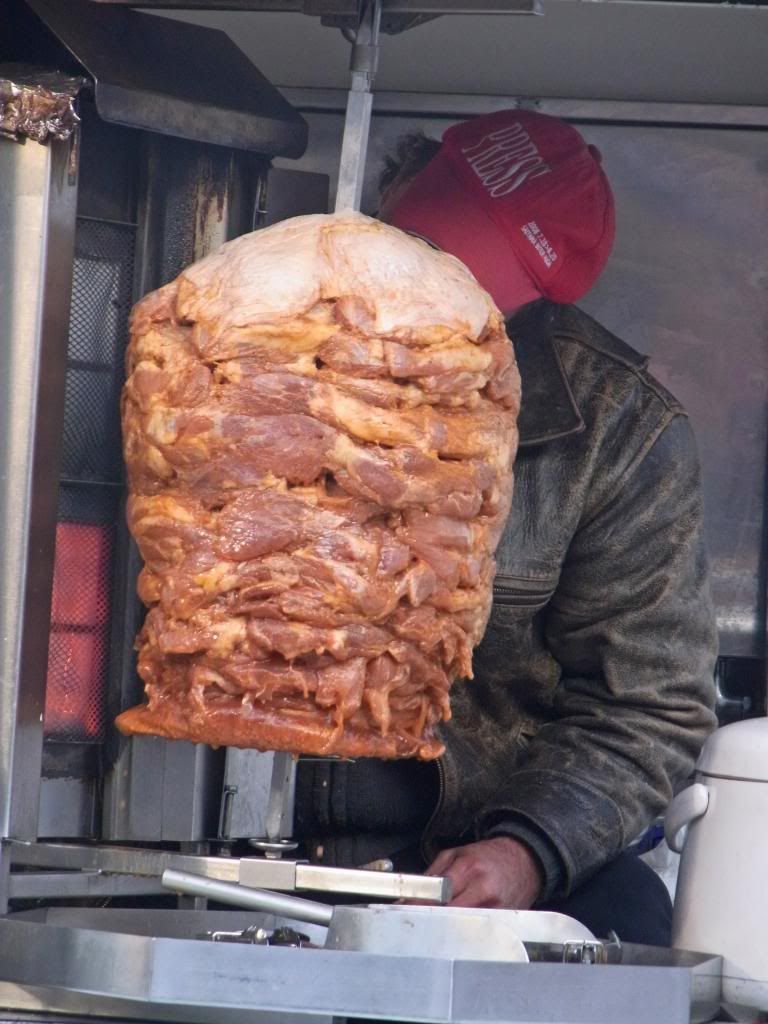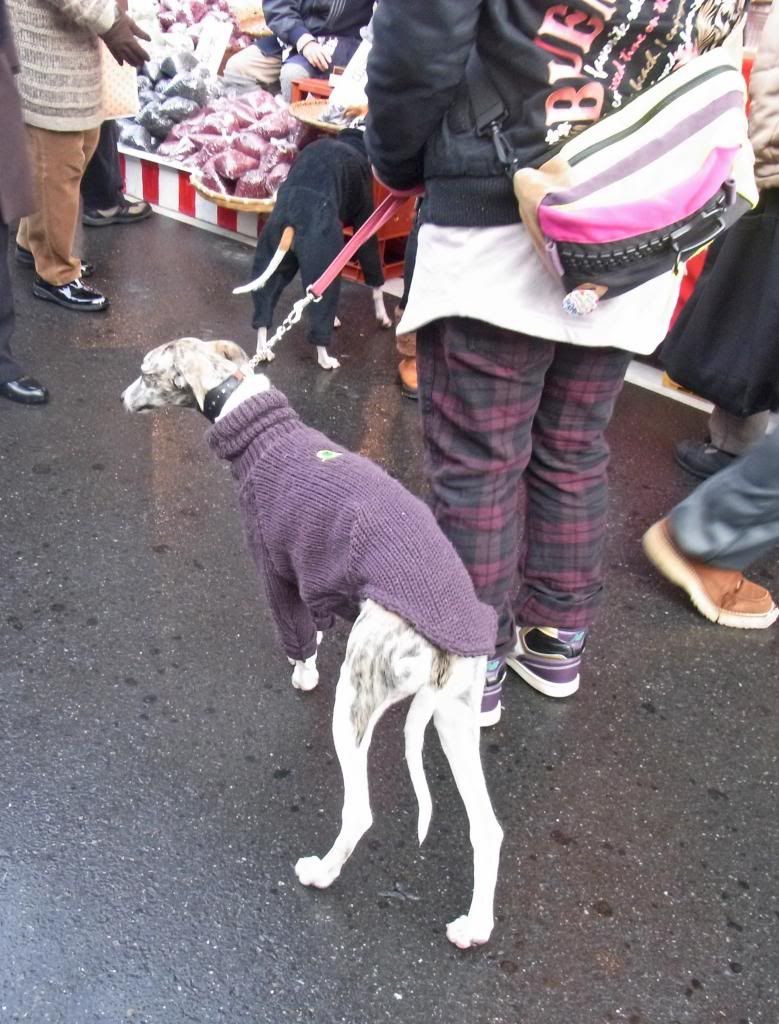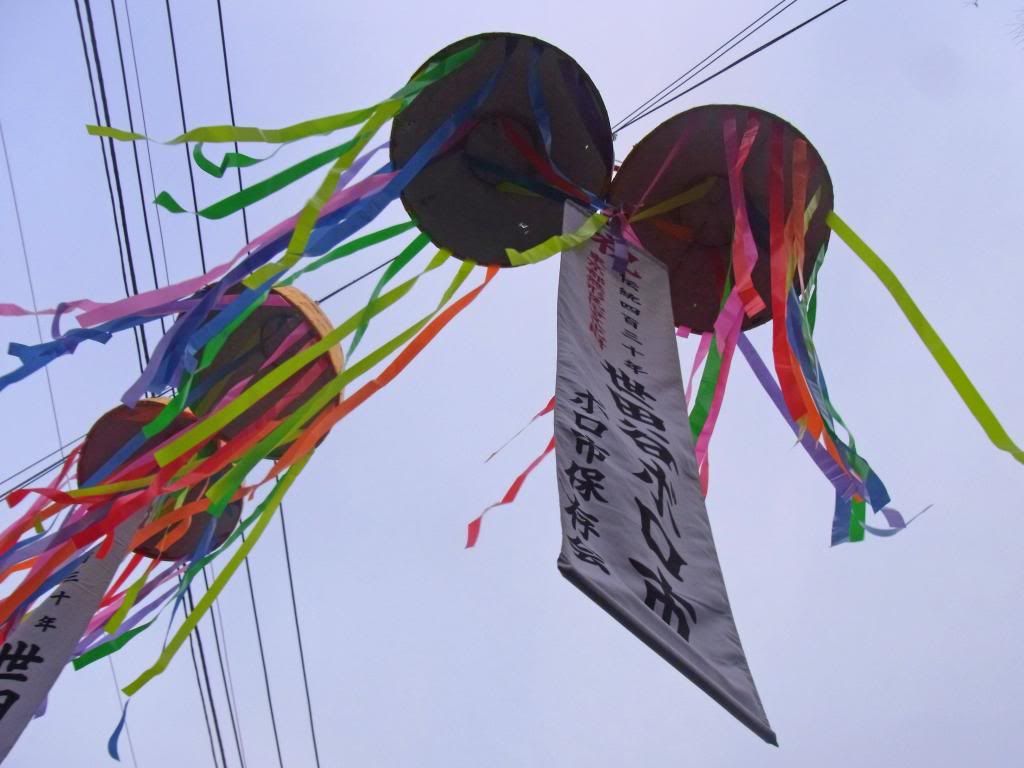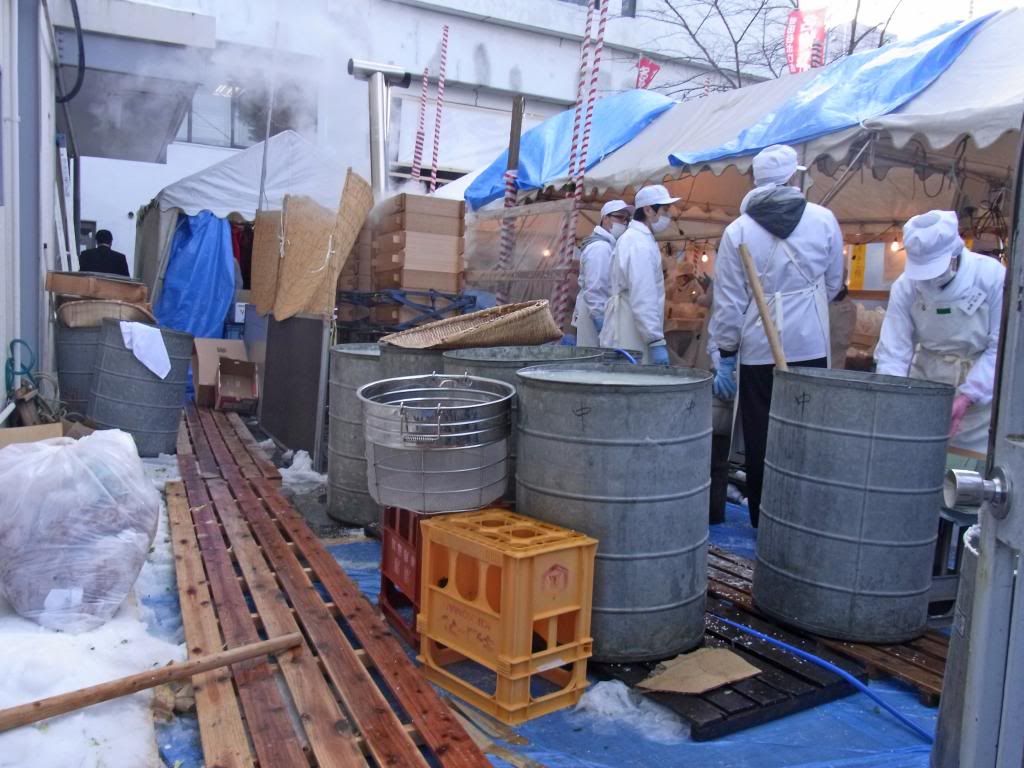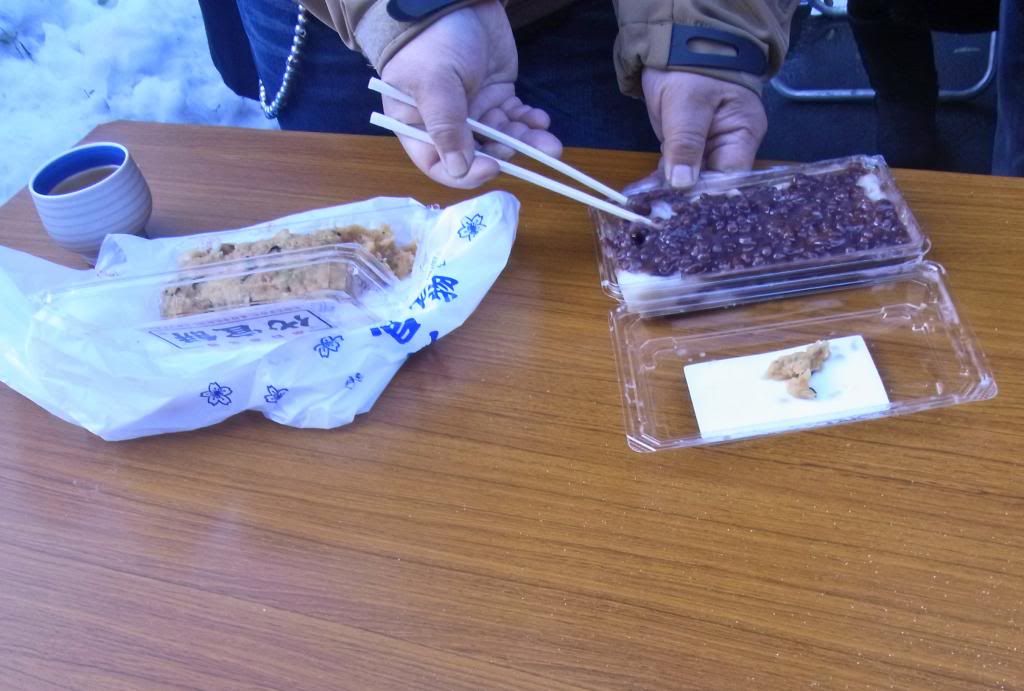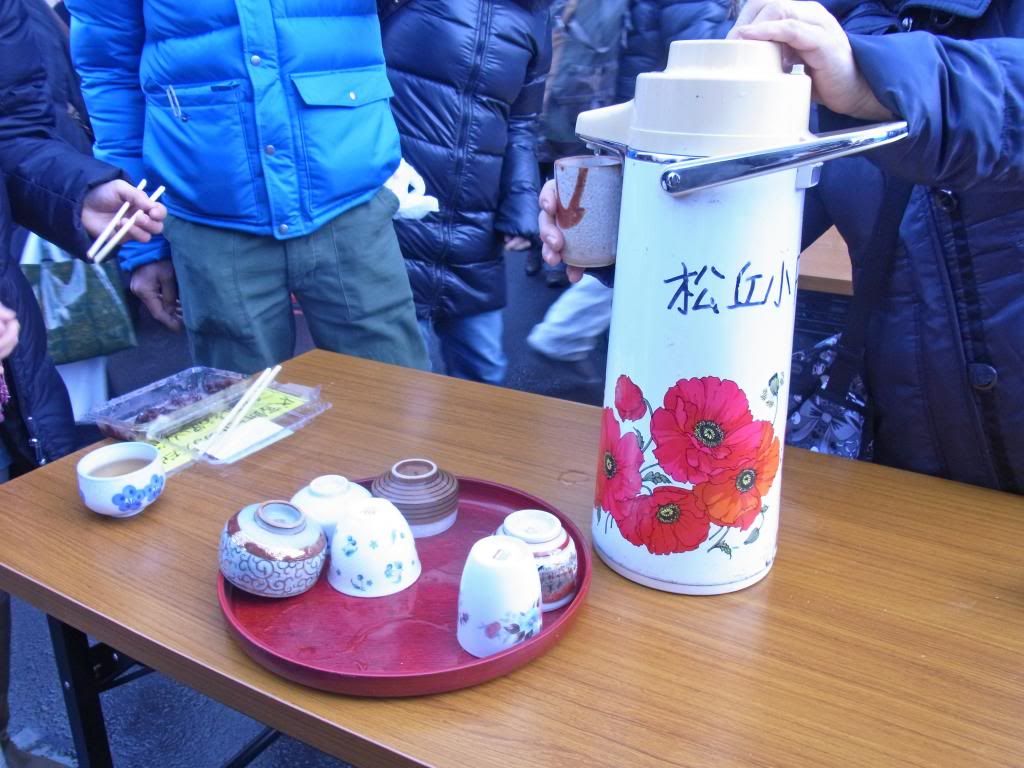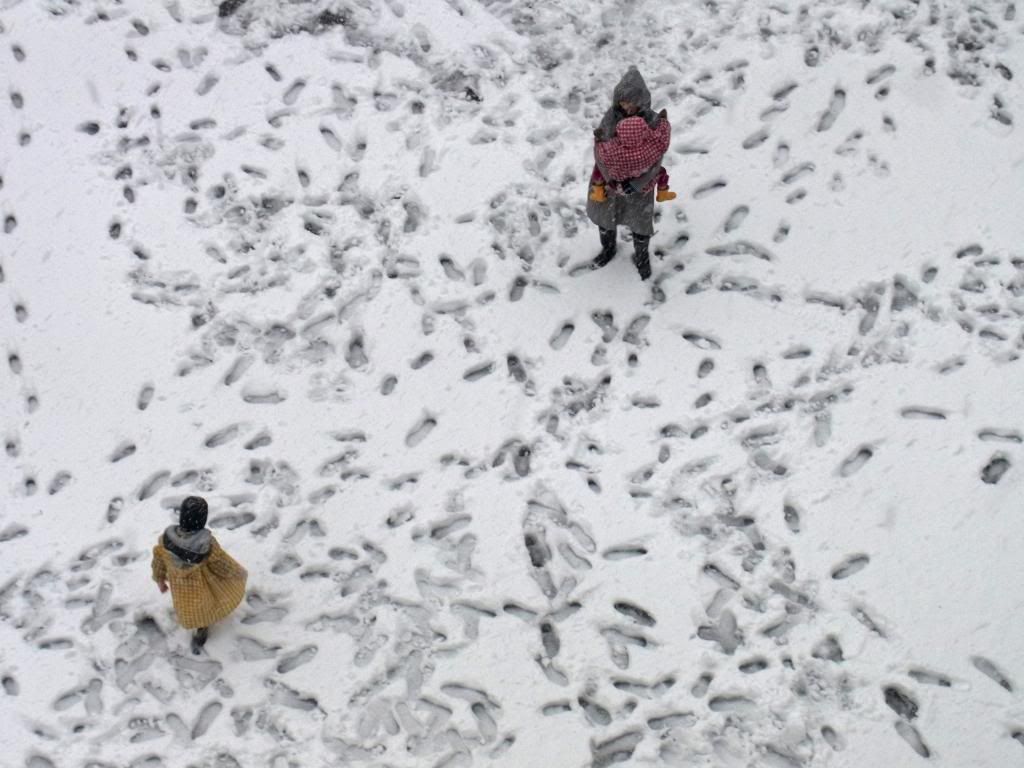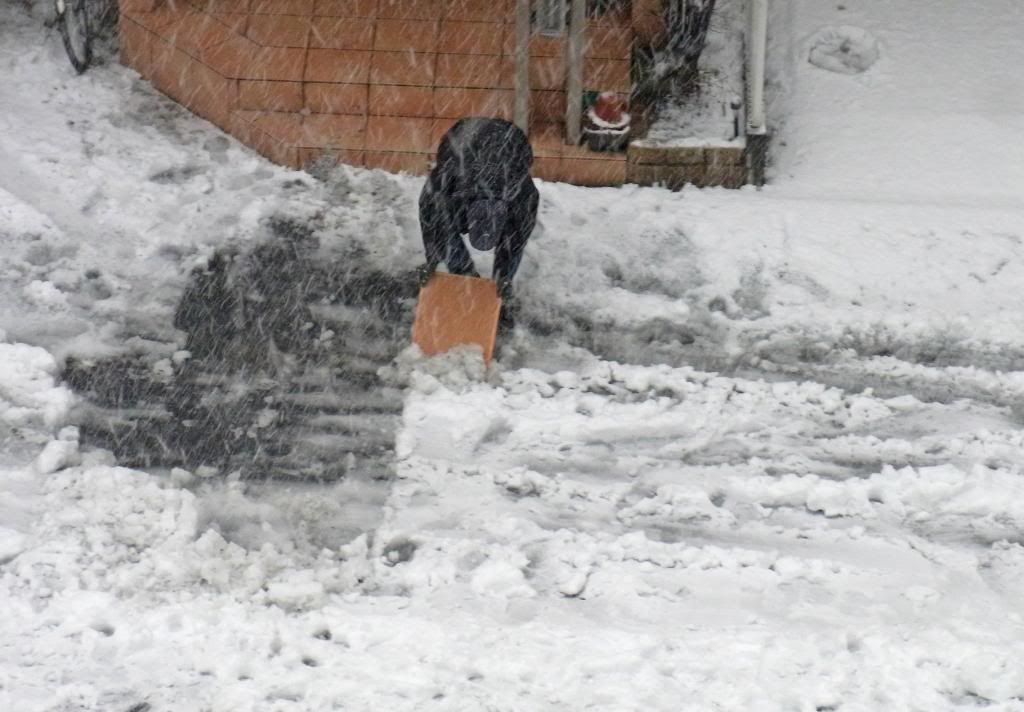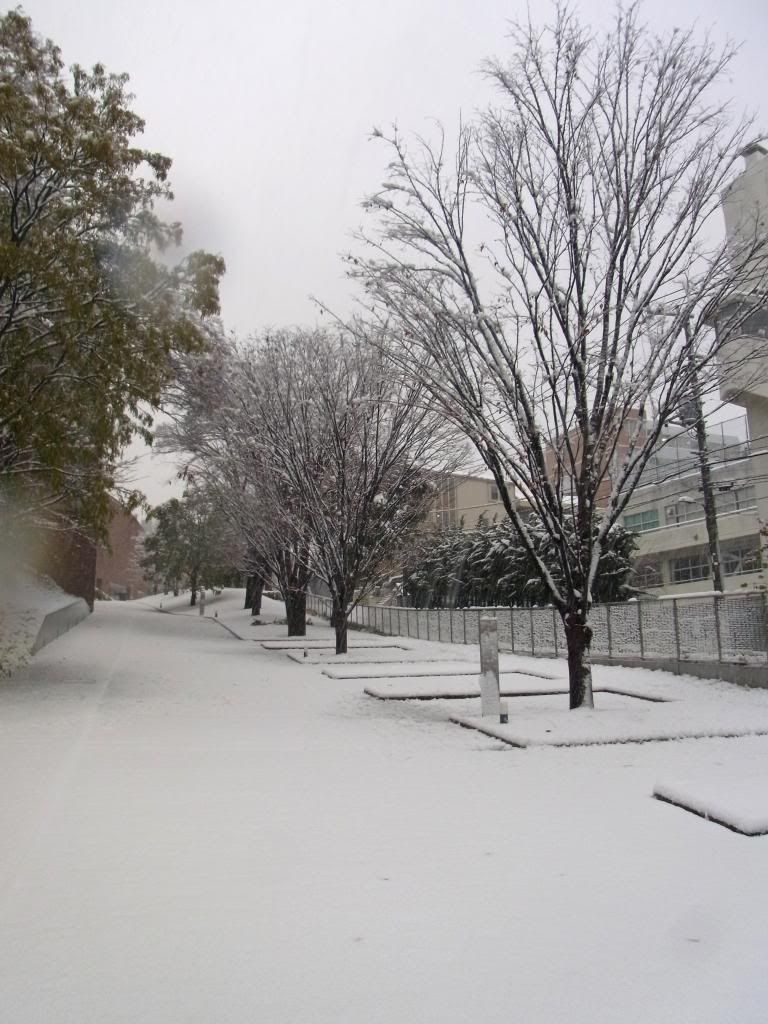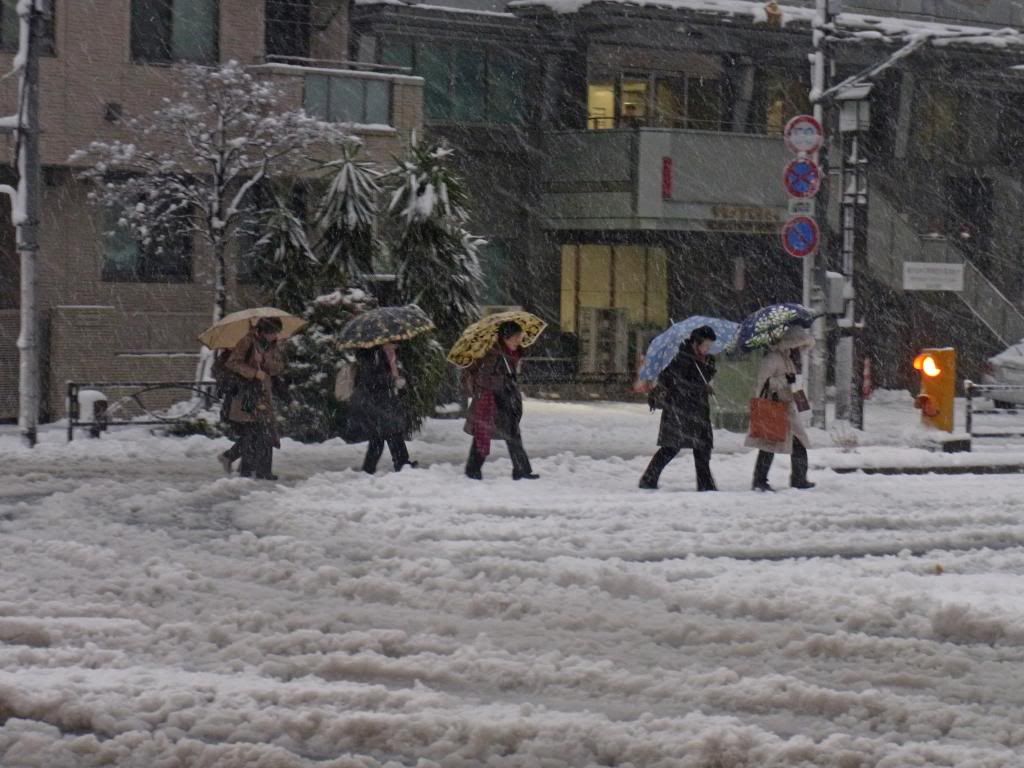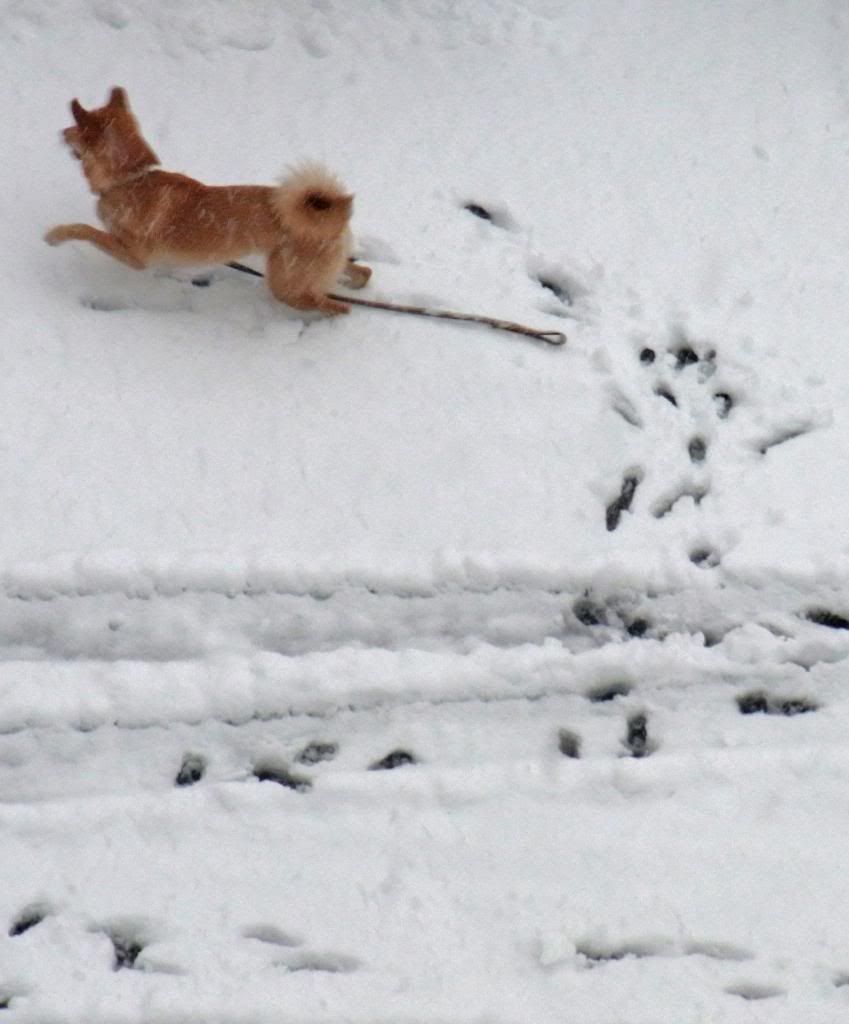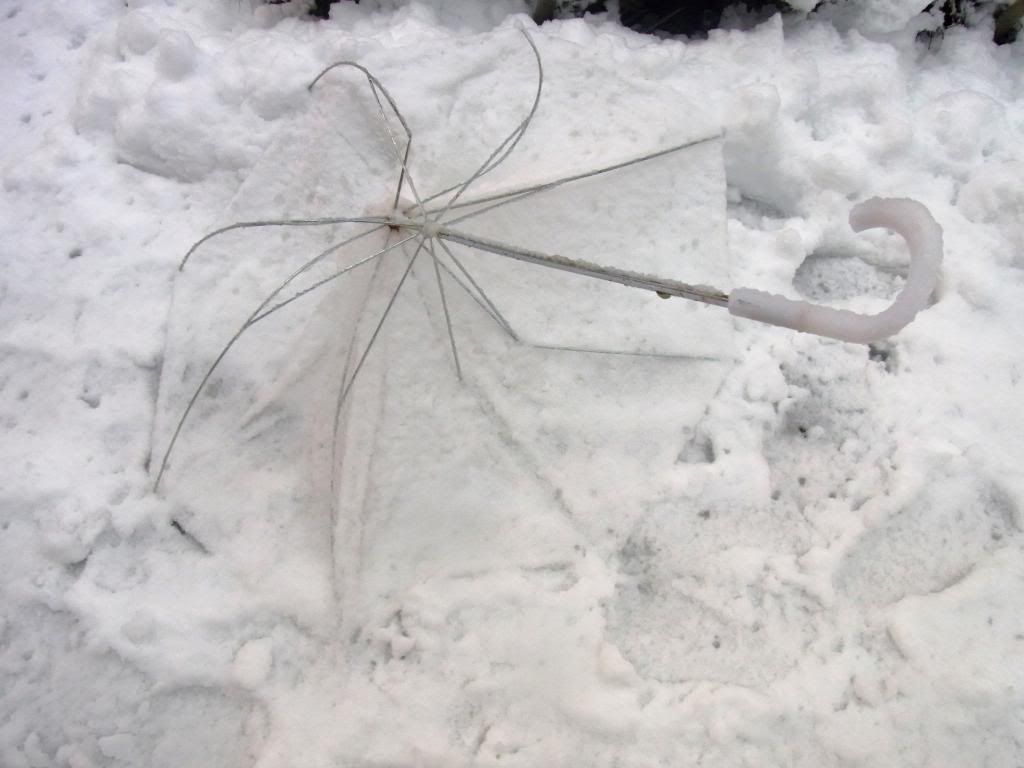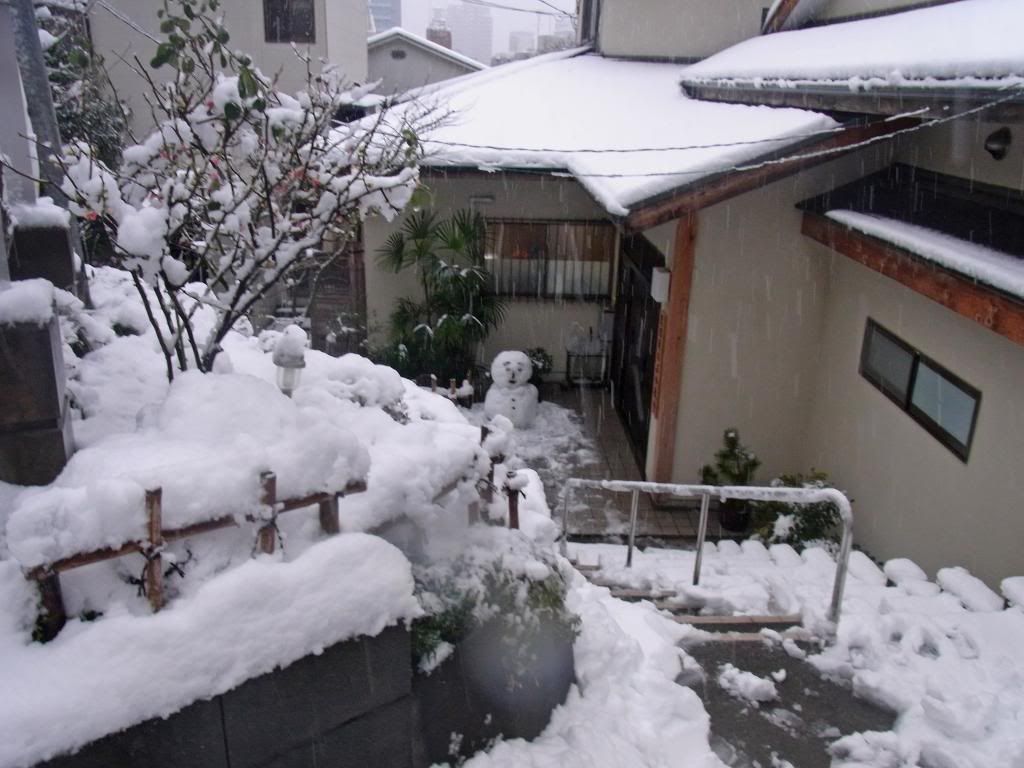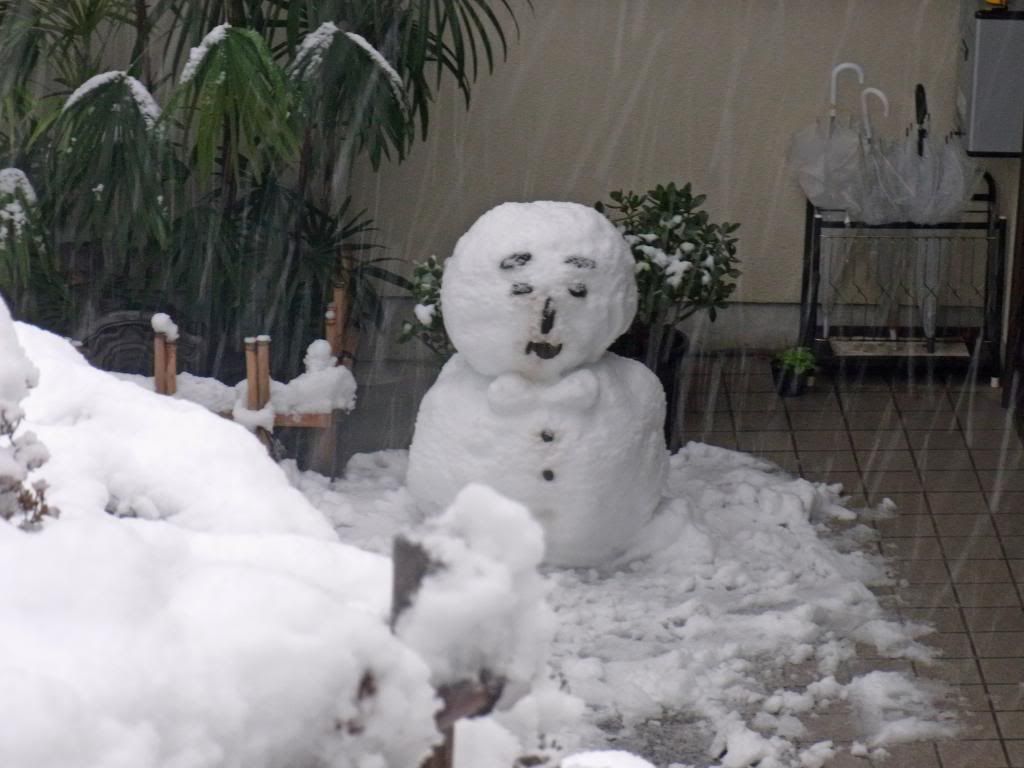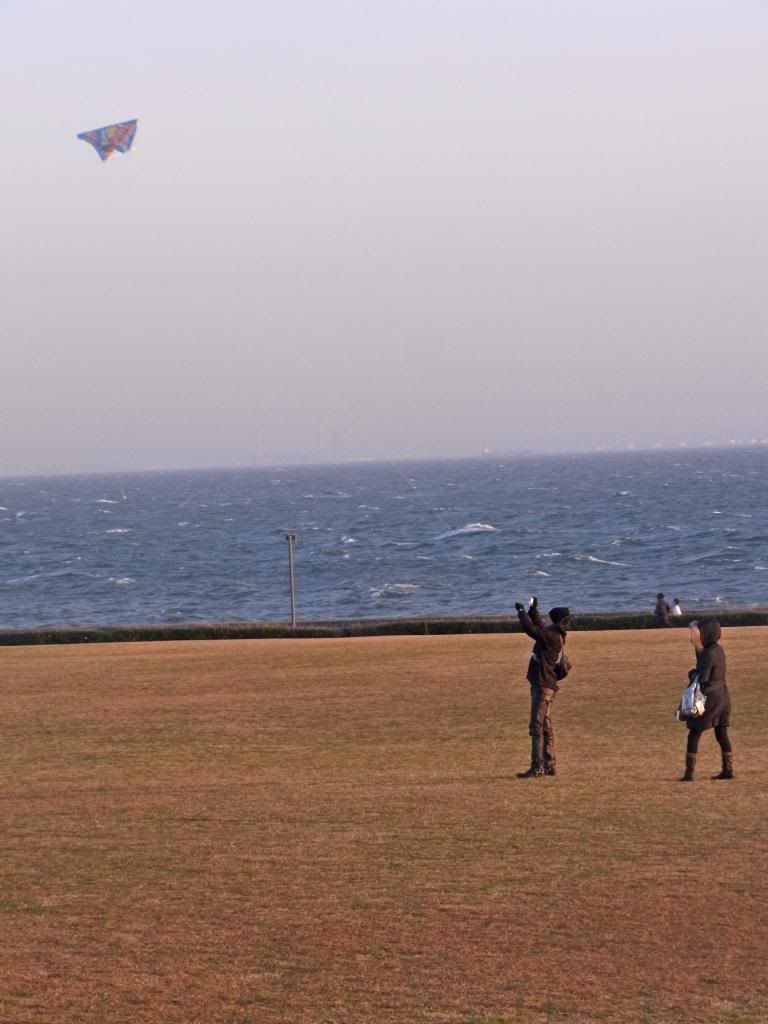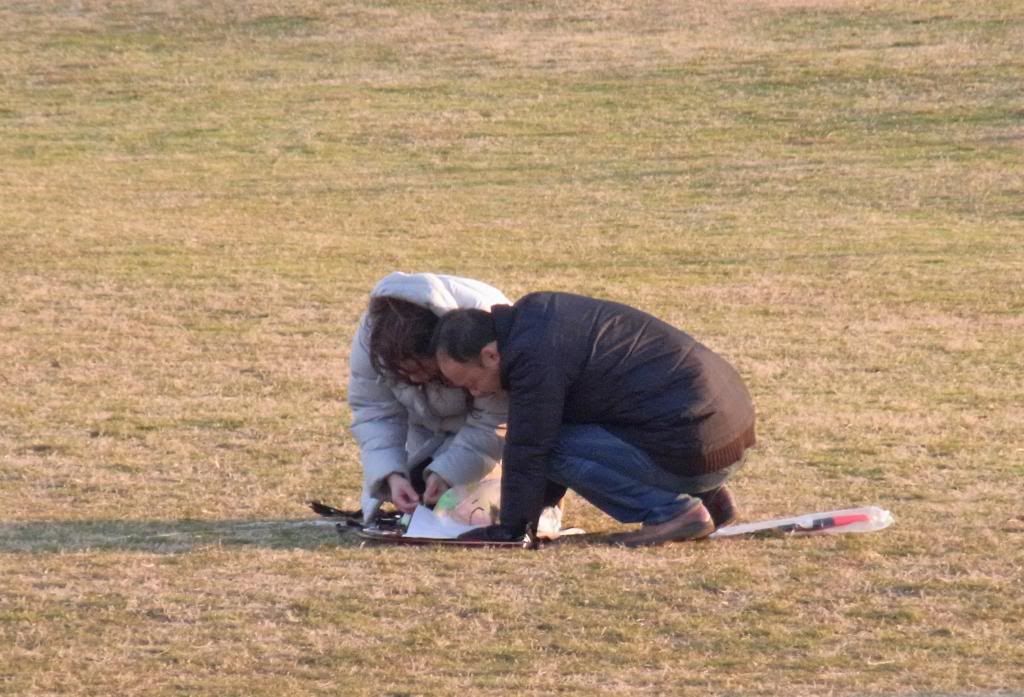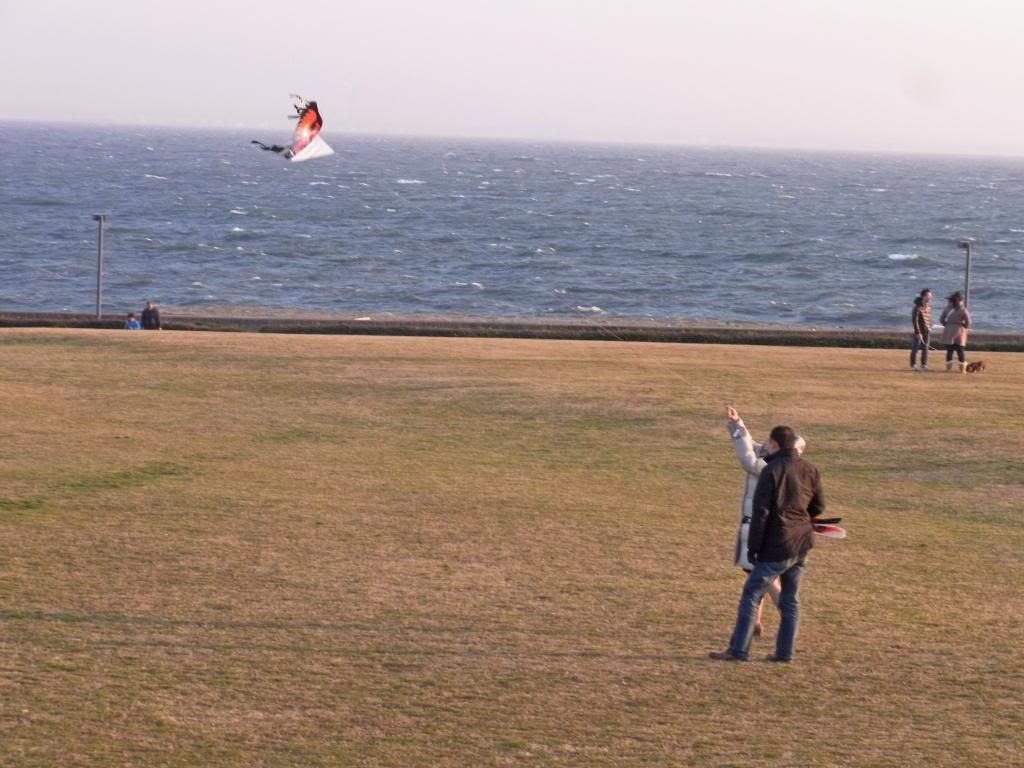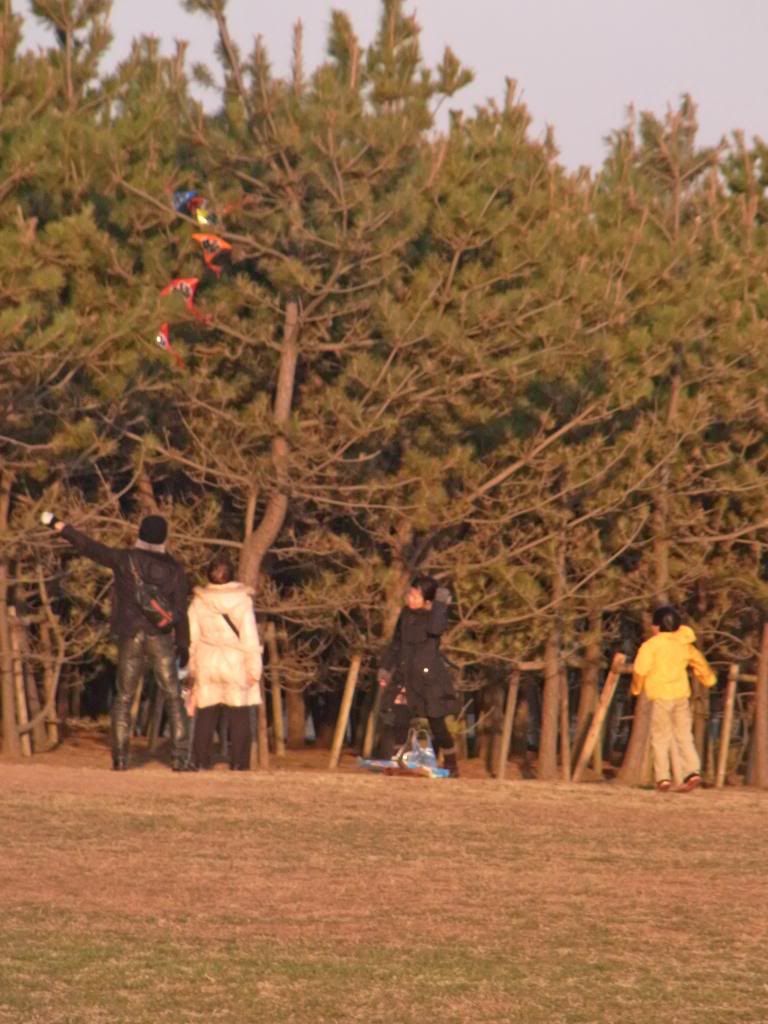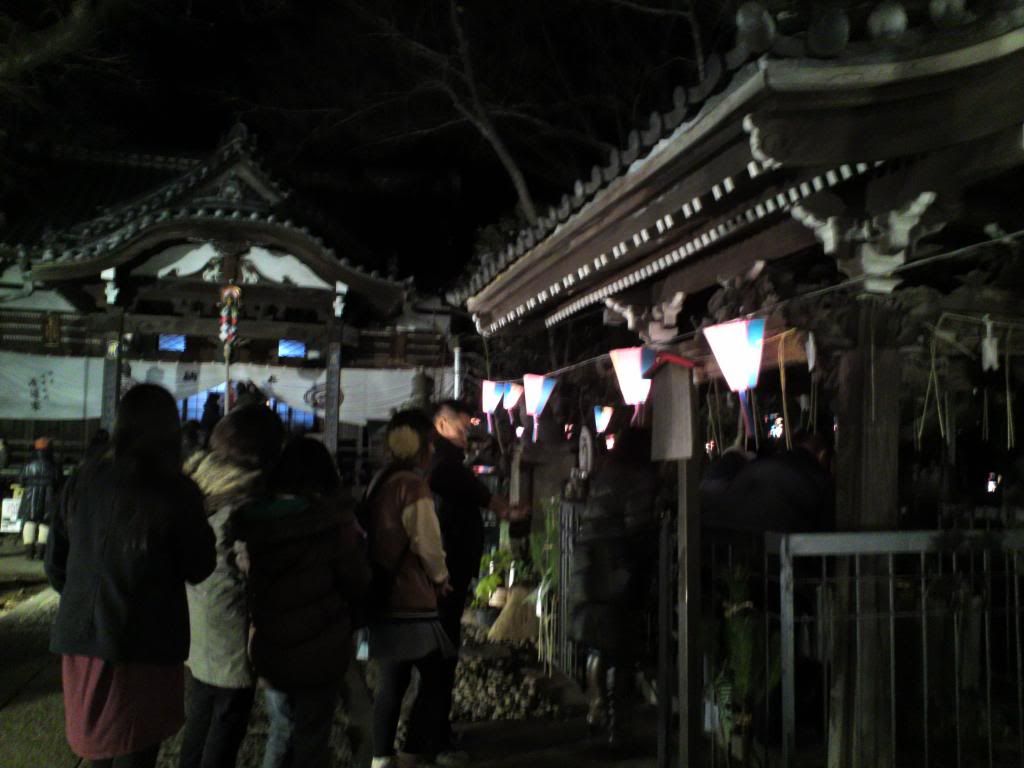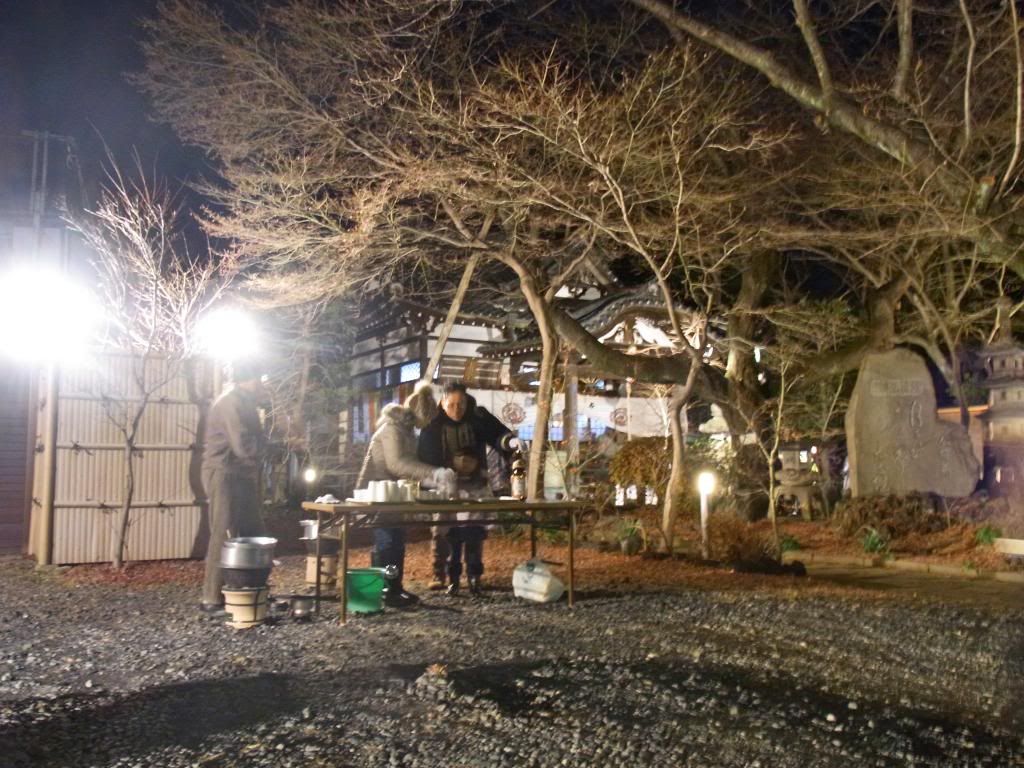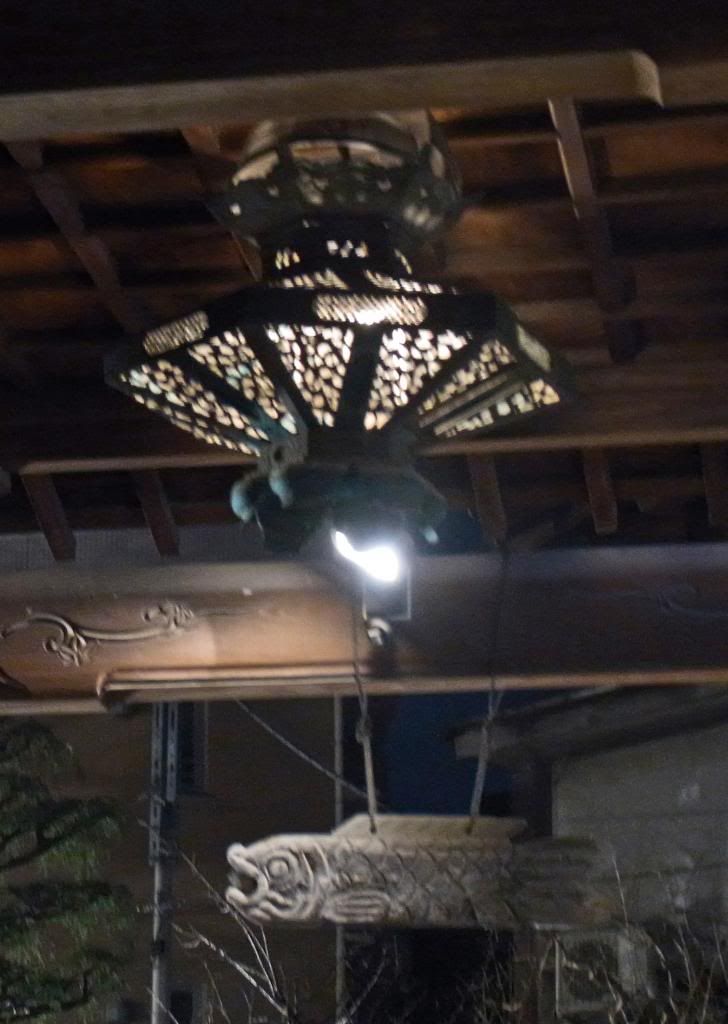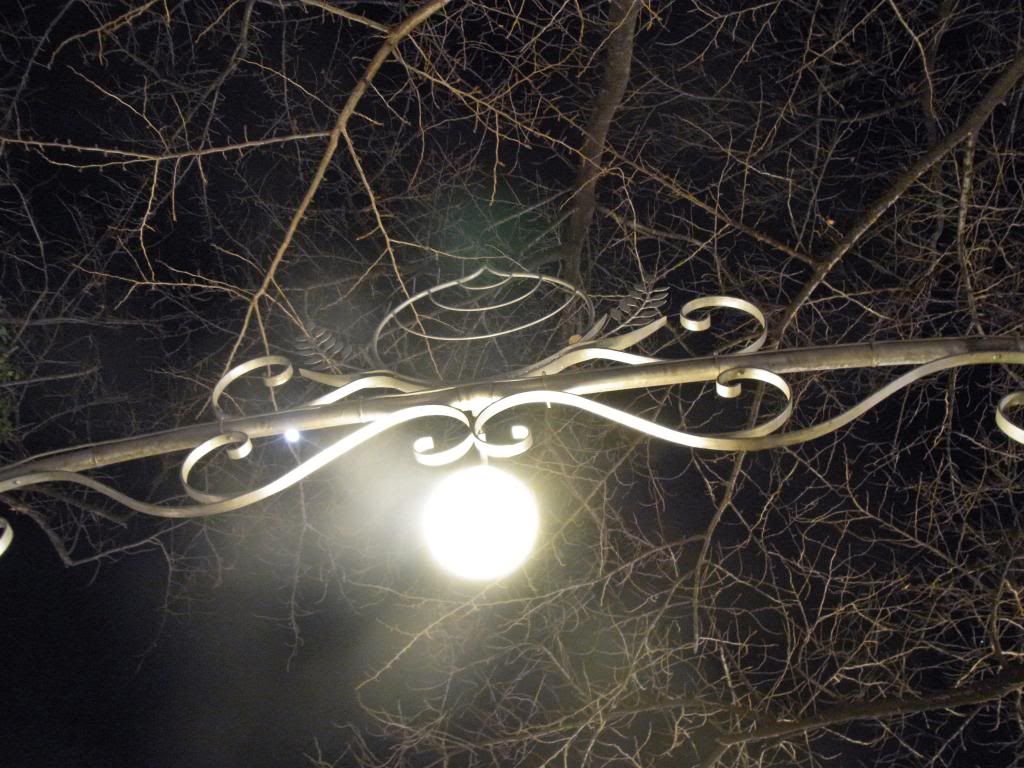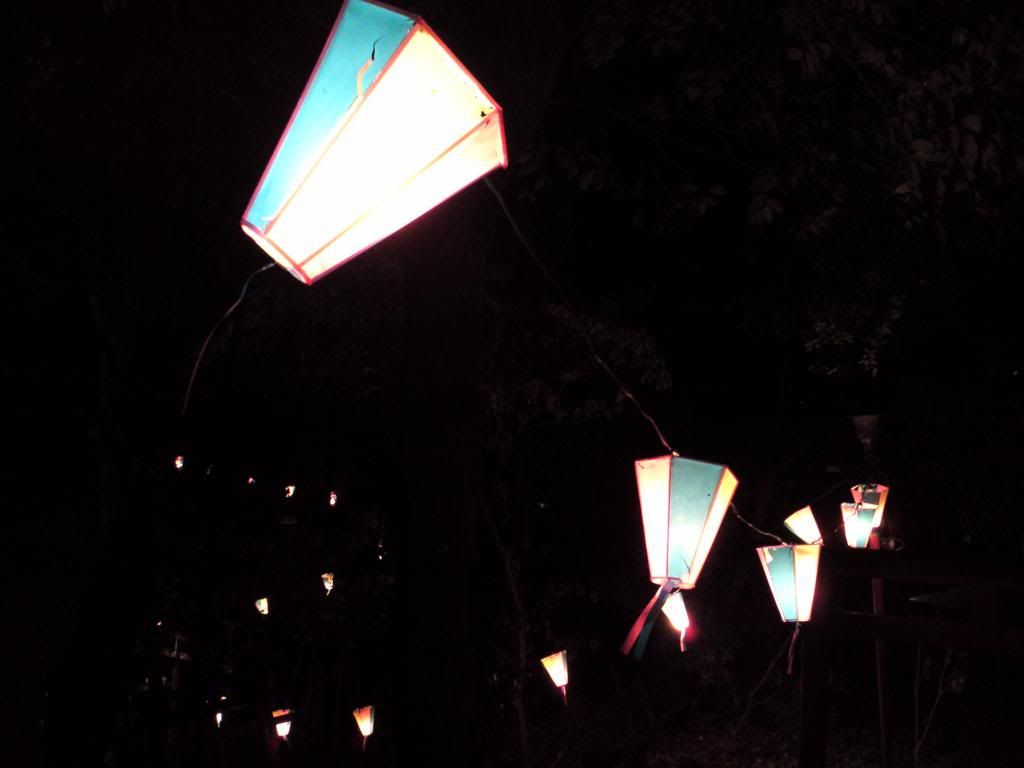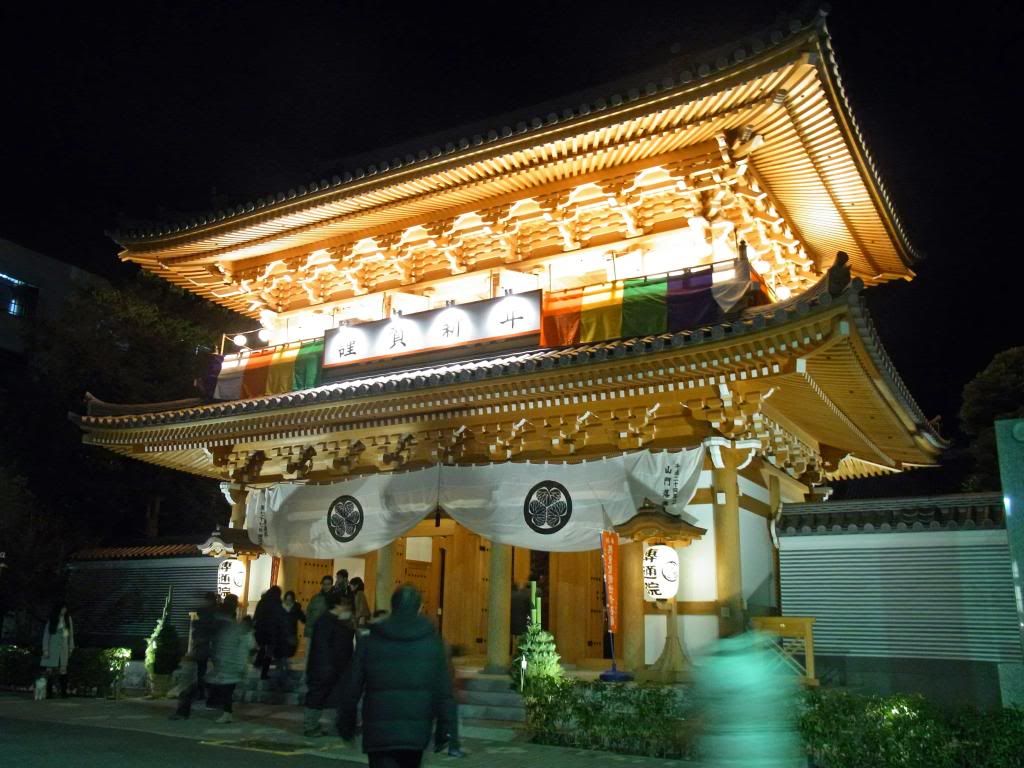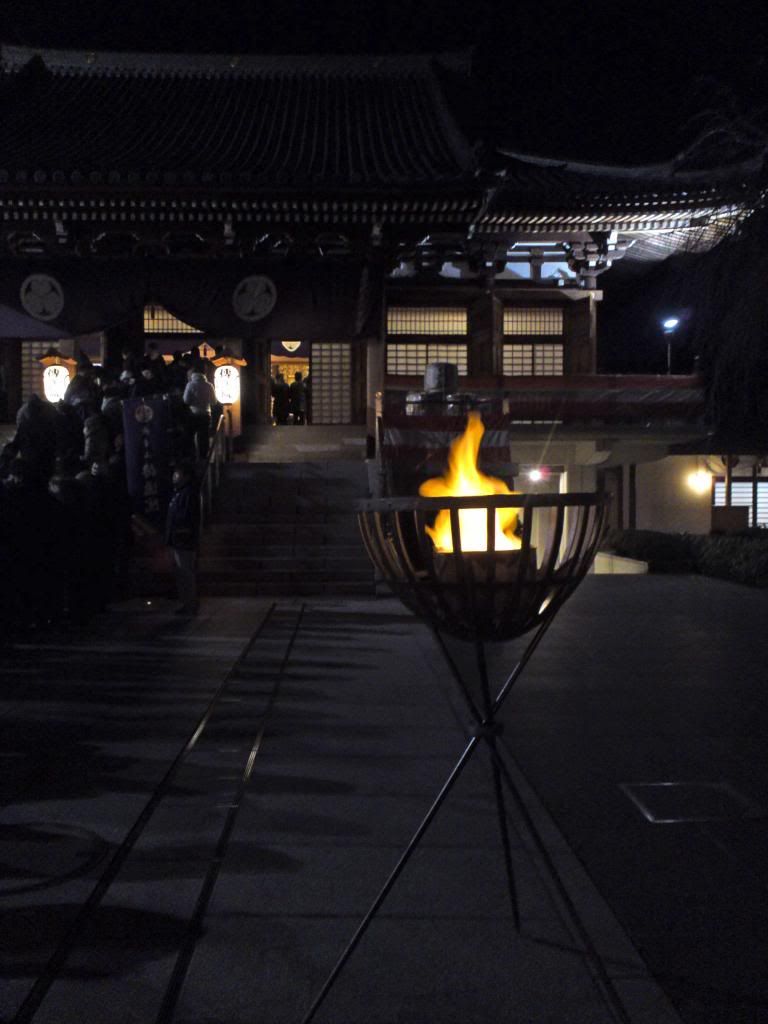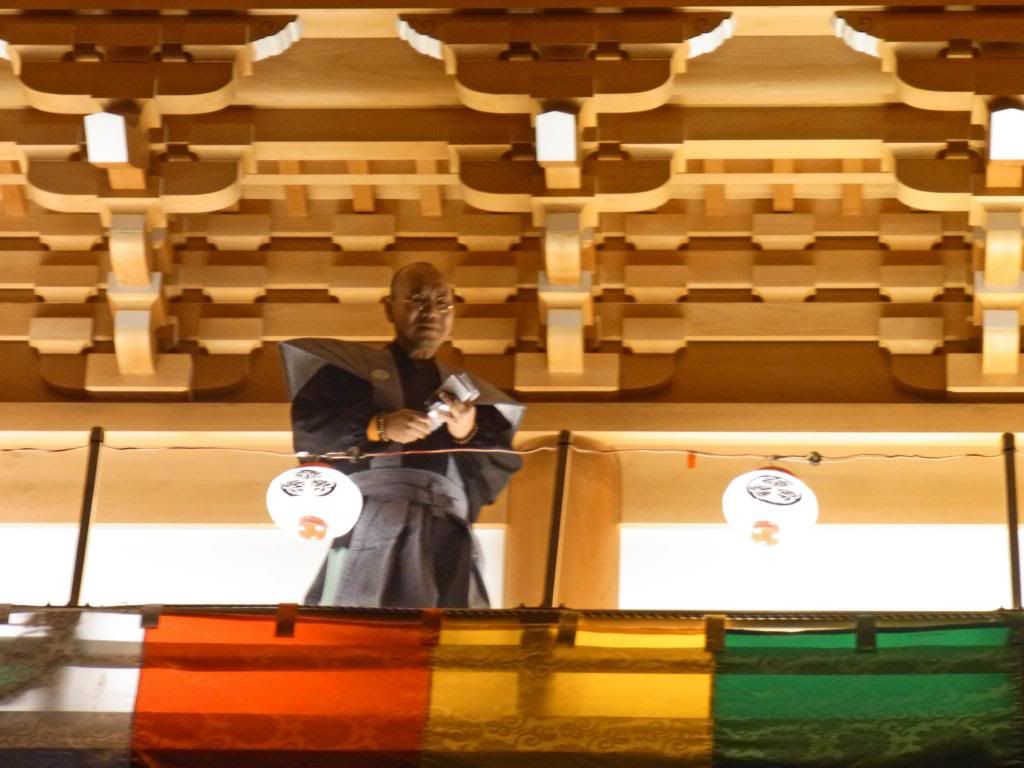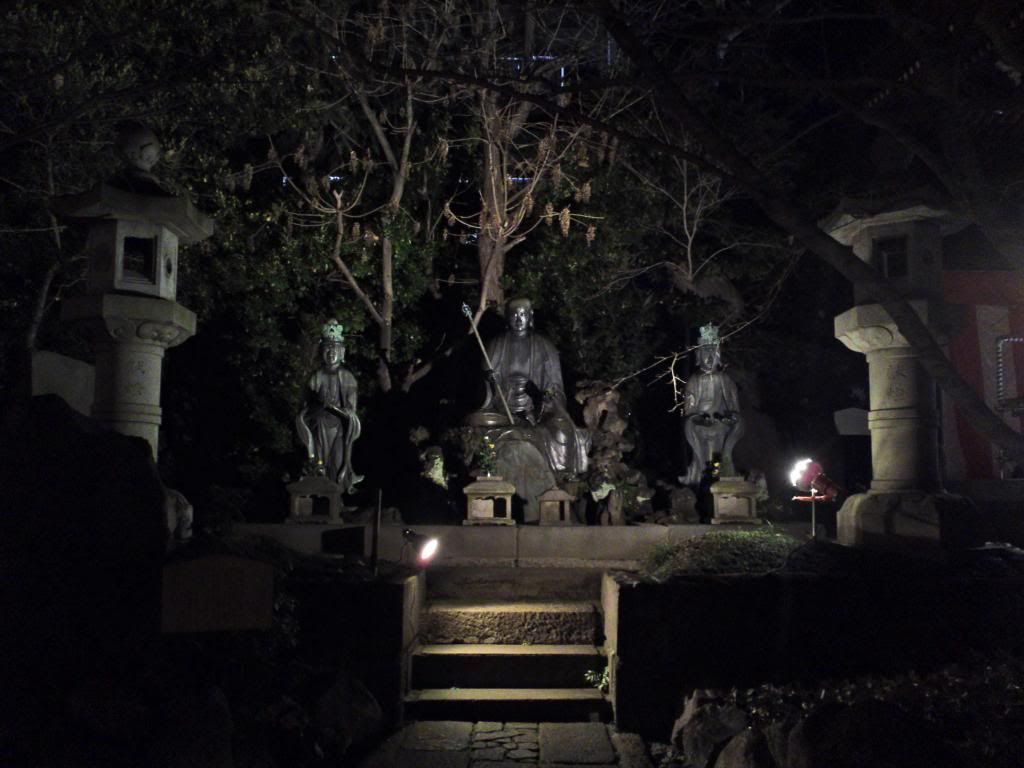January 26, 2013
January 19, 2013
Setagaya Boroichi Festival, Mochi Edition
The Boroichi Festival in Setagaya, a large-scale flea market/festival held twice a year on January 15-16, and December 15-16. Boro means "rag" in Japanese, and refers to the scraps of cloths that farmers would buy to reinforce the straw sandals they wove during non-farming season. However, markets were held in the area long before this; it is said to have started in the 1570s.
The market is open from 9am to 8pm, and there are around 700 stands. While there is much to see and eat, a major highlight is Daikan Mochi, mochi cakes that are sold specially at this festival every year. In the above photo, you can see the banner pointing to the mochi stand.
As with all extremely popular things in Japan, if you want to be a part of it, you have to be prepared to wait in line, up to 40 minutes in this case. This was the day after the big snow and it was bitterly cold. Fortunately, I barely had to wait -- even the second time I went to buy mochi. The people (and chihuahua) above were not so lucky.
The back of the tent, where the mochi was being prepared. As you can imagine, there was an extremely efficient system for buying mochi, designed to take the least amount of time possible.
I bought kinako-covered mochi (soybean flour sweetened with sugar powdered all over the mochi), and the other two kinds were anko (sweet bean paste), and karami (mochi covered in daikon radish and flavored with fish flakes). They were all sold out by 4:30 pm when I visited on the first day.
In a very thoughtful touch, hot hojicha tea had been prepared for people eating outside. The cups were periodically gathered and washed, and fresh tea was put in the thermos quite frequently.
A woman preparing hot tea outside, right near the tables where people ate their mochi.
January 14, 2013
Snow Day in Tokyo
First snow day of the year! I can't remember the last time it snowed so steadily throughout the day. Tokyo generally gets around 2-3 snow days a year, and often only in concentrated snatches.
The problem is that no-one is ever prepared for snow. We don't have a dependable snow-plowing system, the trains and subways go out of wack, and snow-shoveling is not something regular citizens are committed to doing.
Here, a man shovels the front of his house with the only thing he has that is similar in function to a snow shovel -- a cork board.
Old ladies walking across the street like ducks in a row.
A Shiba dog, happily prancing around.
These two had shovels for arms!
The problem is that no-one is ever prepared for snow. We don't have a dependable snow-plowing system, the trains and subways go out of wack, and snow-shoveling is not something regular citizens are committed to doing.
Here, a man shovels the front of his house with the only thing he has that is similar in function to a snow shovel -- a cork board.
At one point, even the Yamanote Line had stopped. Less dependable lines such as the Musashino were goners as soon as it started snowing. After some time, though, they were running again with reduced lines.
A pristine snow-covered area, if only because the gates to the property were closed.
A Shiba dog, happily prancing around.
The thing about snow in Tokyo: you always need an umbrella, because it's closer to sleet than snow.
Today was a holiday (Coming of Age Day), which meant kids had time to enjoy the snow and make snowmen.
This one had a bow tie!
Complications of Kite-Flying
These photos were taken on January 2nd, the only time of the year when you see dozens of kites in the sky. These were taken in a large field near Tokyo Bay..
Tokyo Bay is generally very windy, but this day was particularly so. A lot of people were having trouble keeping their kites in the air.
Labels and categories:
New Year
January 6, 2013
New Year's Day at Takuzosu Inari Shrine/Jigenin Temple
After welcoming the new year at Denzuin Temple, at around twelve-thirty in the morning on New Year's Day, I went to Takuzosu Inari Shrine/Jigenin Temple, which is just down the street. I'd visited this shrine/temple several times last year, and every time I went, the place was nearly deserted. I was glad to see dozens of people lining up to pay their respects.
Shinto deities and Buddhist deities were forbidden to be worshipped together in the Meiji era, but this place serves as indication that the Shinbutsu-bunri Law (literally "kami-buddha separation law") was not fully pervasive. One clear sign of this are the foxes (symbolically associated with shrines) on the front of the temple's main building.
One of the reasons I like this shrine/temple is because I discover something new every time I visit. On that day, I noticed the large fish hanging on the side of the main temple building.
The shrine section had been decorated all around with these lanterns, casting an eerie but beautiful effect.
The next large event for the shrine/temple is February 2, Setsubun Day.
Labels and categories:
New Year,
shrines and temples,
Tokyo
New Year's Eve at Denzuin
Last year, I rang in the new year at Hongwanji Temple in Tsukiji. This year, I opted for Denzuin, in Koishikawa (about 15 minutes' walk from Myogadani or Kasuga Stations.)
A Jodo Buddhist temple established in 1415, Denzuin weathered three major fires (in 1721, 1725, and 1908), and was destroyed completely in World War II. The main hall was rebuilt after the War, and renovations are still carried out periodically. The new gate (pictured below) was completed only last year.
The gate is two-storied, and priests threw small packages down to visitors after the clock had struck midnight. Their reach was limited, so I was not able to see what was actually inside.
Unlike Hongwanji, there was no actual countdown to the new year, so the overall effect was rather anticlimactic. There was also less of a sense of community.
Visitors took turns ringing the bell.
The path you take after ringing the bell leads you past the three statues of bodhisattvas.
Labels and categories:
New Year,
shrines and temples,
Tokyo
Subscribe to:
Posts (Atom)

